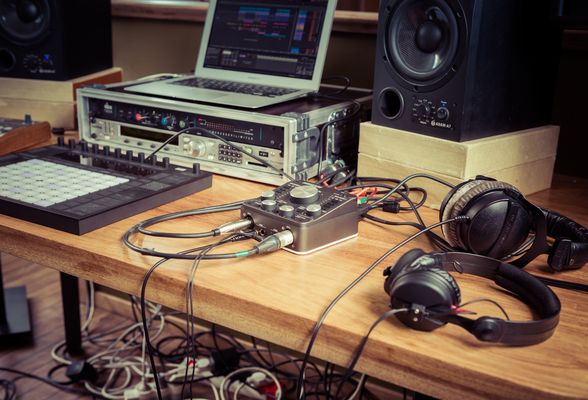
The Prophet-5 can be heard on tons of iconic tracks, including Michael Jackson’s “Thriller” and the theme for John Carpenter’s “Halloween.” With Arturia’s Prophet V, you can now dive deep into the iconic pads, leads, and basses of Sequential Circuits’ flagship synth for a fraction of the price and a fraction of the weight. The original model included five voices of polyphony, with each voice coming with two VCOs that could generate sawtooth, square, and triangle waves. The instrument was created by Dave Smith in 1977, and premiered at NAMM a year later. The Prophet-5 was the world’s very first fully-programmable polyphonic synthesizer, making it the grandfather to your favorite Serum plugin, your beloved Microkorg, and your prized Massive patch. Sequential Circuits’ Prophet-5 lives up to its name, representing a visionary look into music’s future. In fact, you can even load up your own samples, with the original machine’s wonderfully realistic flutters and tape delays still intact. Thankfully, you won’t have this problem with Arturia’s brand-new recreation, the Mellotron V. The original instrument was famously impossible to tune – factors like room temperature, smoke, and humidity tended to wear down the tapes and the tape head. The Mellotron soon grew in popularity amongst rock musicians – The Beatles most famously used it on “Strawberry Fields Forever,” and other spotlights include the strings on David Bowie’s “Space Oddity,” the signature cellos of Oasis’ “Wonderwall,” and the choir sounds in Radiohead’s “Exit Music (For a Film).” The Mellotron MK1 was released in 1963, and Chamberlin and Mellotronics subsequently agreed out-of-court to continue manufacturing each instrument independently. They formed a new company, Mellotronics, and recorded full orchestras for the product launch. However, in 1962, Chamberlin’s sales agent Bill Fransen spoke with employees of the tape engineering company Bradmatic Ltd, who decided to create their own copy of the instrument with the misunderstanding that the owner of the concept was Fransen, rather than Chamberlin. Harry Chamberlin originally developed and patented a keyboard that could play tape loops in the 1940s.

The Mellotron could be considered the music industry’s first sampler, with a history that’s as complex as the original machine itself. In this blog post, let’s explore seven of these emulations and their analog counterparts, including three keyboards that are brand-new additions to V Collection’s roster. Each instrument featured in V Collection 8 is legendary in its own right, possessing a rich history and unmistakable sound. Mapping out every circuit, component, and nuance, V Collection 8 boasts meticulous emulations of a whopping 28 classic keyboards. Illustration: Yann Bastard V Collection is Arturia’s acclaimed synth, organ, piano, and performance keyboard anthology.


 0 kommentar(er)
0 kommentar(er)
